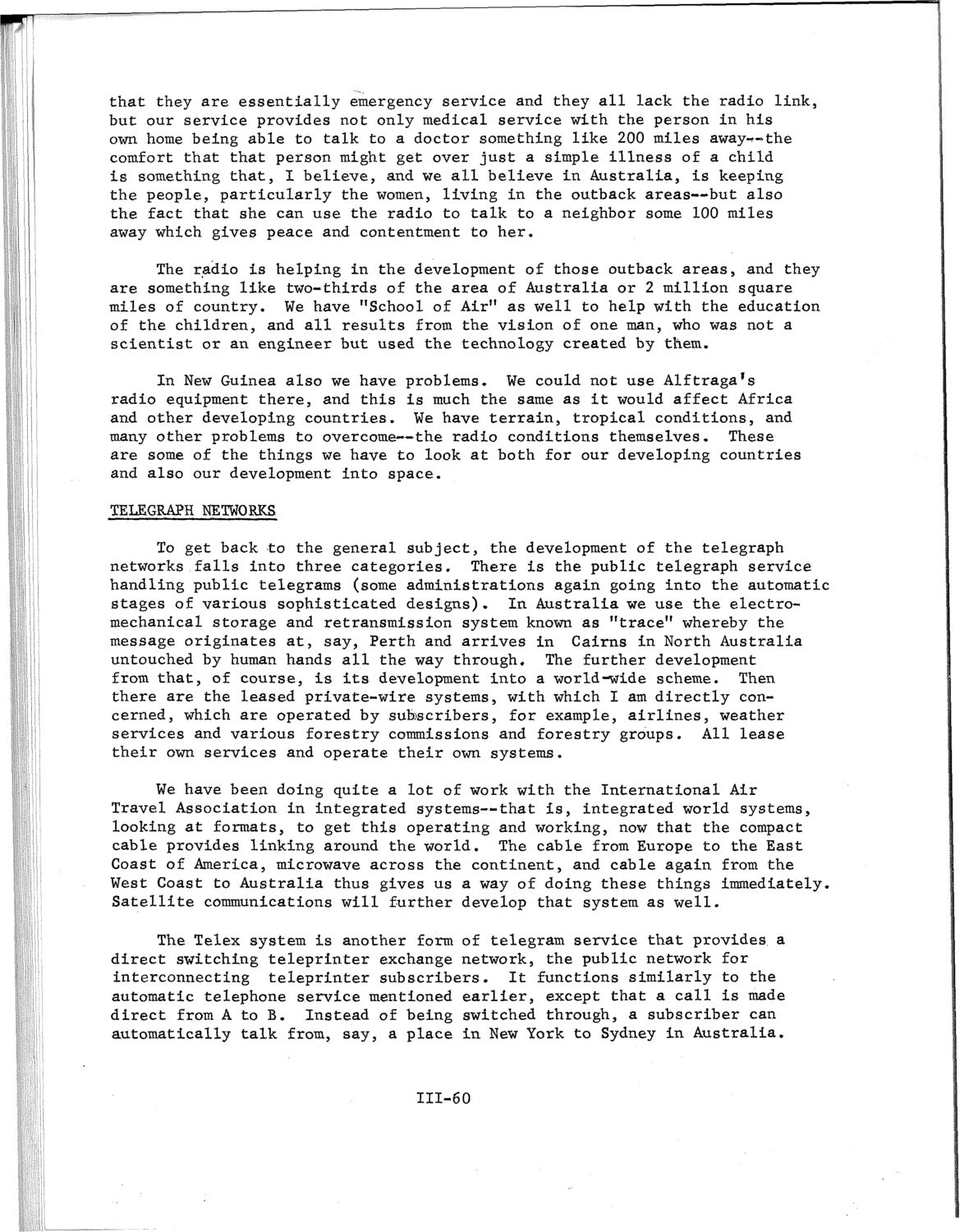| |
| |
Caption: SWE - Proceedings of the First International Conference of Women Engineers and Scientists
This is a reduced-resolution page image for fast online browsing.

EXTRACTED TEXT FROM PAGE:
that they are essentially emergency service and they all lack the radio link, but our service provides not only medical service with the person in his own home being able to talk to a doctor something like 200 miles away-t-the comfort that that person might get over just a simple illness of a child is something that, I believe, and we all believe in Australia, is keeping the people, particularly the women, living in the outback areas—but also the fact that she can use the radio to talk to a neighbor some 100 miles away which gives peace and contentment to her. The radio is helping in the development of those outback areas, and they are something like two-thirds of the area of Australia or 2 million square miles of country. We have "School of Air" as well to help with the education of the children, and all results from the vision of one man, who was not a scientist or an engineer but used the technology created by them. In New Guinea also we have problems. We could not use Alftraga's radio equipment there, and this is much the same as it would affect Africa and other developing countries. We have terrain, tropical conditions, and many other problems to overcome—the radio conditions themselves. These are some of the things we have to look at both for our developing countries and also our development into space. TELEGRAPH NETWORKS To get back to the general subject, the development of the telegraph networks falls into three categories. There is the public telegraph service handling public telegrams (some administrations again going into the automatic stages of various sophisticated designs). In Australia we use the electromechanical storage and retransmission system known as "trace" whereby the message originates at, say, Perth and arrives in Cairns in North Australia untouched by human hands all the way through. The further development from that, of course, is its development into a world-wide scheme. Then there are the leased private-wire systems, with which I am directly concerned, which are operated by subscribers, for example, airlines, weather services and various forestry commissions and forestry groups. All lease their own services and operate their own systems. We have been doing quite a lot of work with the International Air Travel Association in integrated systems—that is, integrated world systems, looking at formats, to get this operating and working, now that the compact cable provides linking around the world. The cable from Europe to the East Coast of America, microwave across the continent, and cable again from the West Coast to Australia thus gives us a way of doing these things immediately. Satellite communications will further develop that system as well. The Telex system is another form of telegram service that provides a direct switching teleprinter exchange network, the public network for interconnecting teleprinter subscribers. It functions similarly to the automatic telephone service mentioned earlier, except that a call is made direct from A to B. Instead of being switched through, a subscriber can automatically talk from, say, a place in New York to Sydney in Australia. 111-60
| |